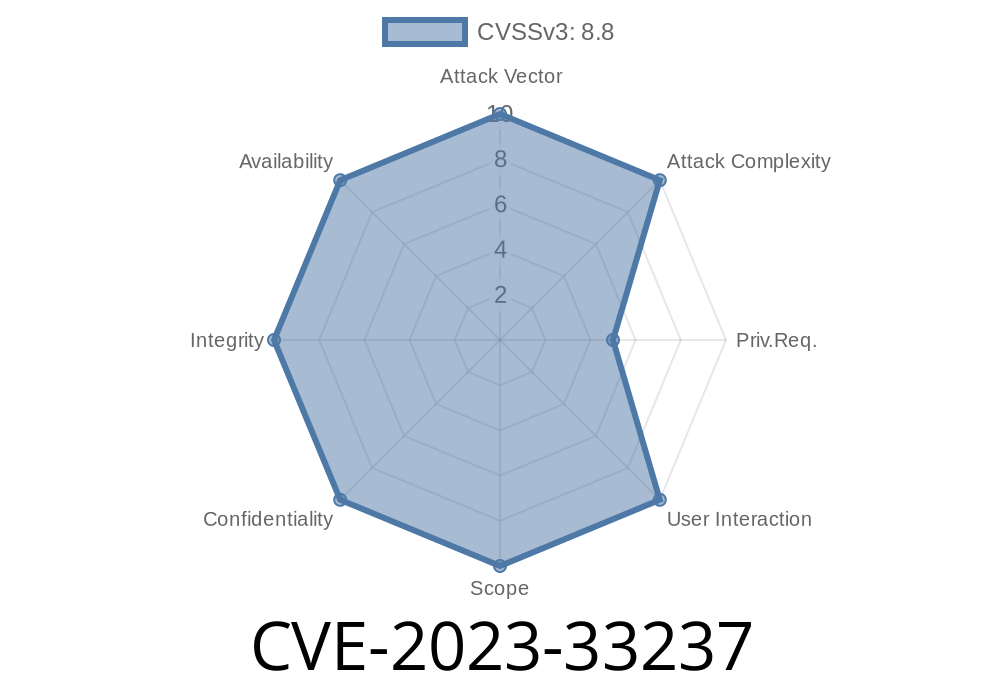A recent security flaw identified as CVE-2023-33237 has brought attention to a serious authentication weakness in Moxa’s TN-590 Series industrial gateway devices. If you’re using firmware version v3.3 or earlier, your devices could be at risk of privilege escalation and unauthorized actions through the web API—a method attackers might use to gain control beyond what they're allowed.
Moxa’s TN-590 series is widely adopted for network management in critical infrastructure like railway, energy, or automation setups. That means an exploit here matters a lot more than just logging in to a web page—it could mean serious disruptions at the heart of public infrastructure.
In this long read, we’ll break down the vulnerability in plain English, walk you through the affected code logic, show how the exploit works, and share official resources to help you secure your systems.
The Vulnerability at a Glance
- CVE ID: CVE-2023-33237
What’s at Risk?
If a malicious actor finds your exposed device, they could exploit weak authentication checks in the web API. This would let them
or even lock out legitimate administrators.
Even if the attack starts with only minimal access, the flaw allows them to leapfrog into full admin control.
How Does the Flaw Work?
The typical pattern in secure API design is to check the user’s privileges before granting access to sensitive actions. But in the TN-590 series, the API handler wasn’t enforcing these checks strictly. As a result, low-privilege actions (like basic info retrieval) and high-privilege actions (such as configuring network interfaces) shared some logic.
Vulnerable Pseudocode
def api_handler(request):
# Authenticate user
user = authenticate(request)
# Determine which action to perform
action = request.get("action")
# Issue: Check for high-privilege only in the UI, not here!
if action == "get_device_info":
return get_device_info()
elif action == "set_admin_password":
# Missing: No privilege check!
return set_admin_password(request.get("password"))
# ...other actions
In this (greatly simplified) api_handler, setting an admin password isn’t checked for proper privileges. If a user with basic web access can POST to the same endpoint, they can perform a restricted action.
What Should Have Happened
def api_handler(request):
user = authenticate(request)
action = request.get("action")
if action == "get_device_info":
return get_device_info()
elif action == "set_admin_password":
if user.role != 'admin':
return "Unauthorized", 403
return set_admin_password(request.get("password"))
# ...other actions
Here, sensitive actions like set_admin_password are only allowed for authenticated admins.
How An Attacker Abuses CVE-2023-33237
1. Find the Device: The attacker locates a vulnerable TN-590 device (exposed to the public or through internal network access).
Login with Low Privileges: They log in with a basic user account—nothing special needed.
3. Direct API Call: Instead of using the web interface, they craft a direct API call (using tools like curl or Postman) to perform an admin-only action.
4. Bypass the UI Checks: Because the API doesn’t check enough, the action completes—even though their account should not allow it.
Example Exploit Request
curl -X POST http://target-device/api \
-d 'action=set_admin_password&password=newP@ssword' \
-b 'session=valid_low_user_session_token'
Normally, only an administrator should be able to change the admin password. Here, any authenticated user can do it, granting them full control.
Moxa has published a security advisory urging all customers to update
- Moxa Security Advisory: MPSA-230611-01
Fixed Firmware
As of June 2023, firmware updates have been released which properly enforce privilege checks in the API handler. Install the latest firmware available for your TN-590-series device.
Firmware Download:
https://www.moxa.com/en/products/industrial-network-infrastructure/secure-routers/tn-590-series
Mitigation Tips (If You Can’t Upgrade)
1. Limit Network Exposure: Put the device behind a secure firewall. Never expose management interfaces to the open internet.
2. Monitor Logs: Watch for suspicious activity, such as unauthorized changes or frequent low-privilege logins.
Conclusion
CVE-2023-33237 is a classic example of what goes wrong when in-depth privilege checks are skipped in favor of convenience or oversight. For critical infrastructure, the consequences can be severe. If you’re running a TN-590 series industrial gateway, take this opportunity to review your security setup now. Patch as soon as possible—and always treat web APIs as first-class citizens when it comes to authentication and authorization checks.
References
- NVD CVE-2023-33237 Details
- Moxa MPSA-230611-01 Security Advisory
- TN-590 Product Page and Firmware Downloads
Feel free to share this post with your IT team or anyone managing Moxa TN-590 devices. If you have any questions or updates, drop them in the comments below!
Timeline
Published on: 08/17/2023 02:15:00 UTC
Last modified on: 08/22/2023 19:10:00 UTC
